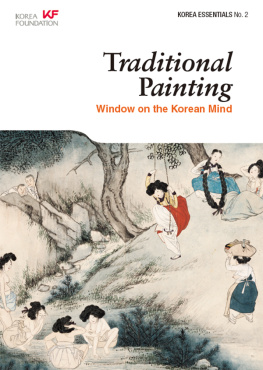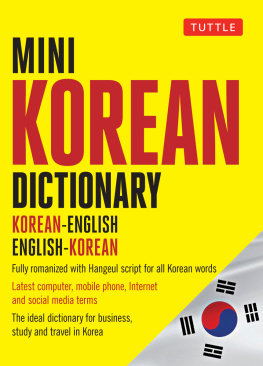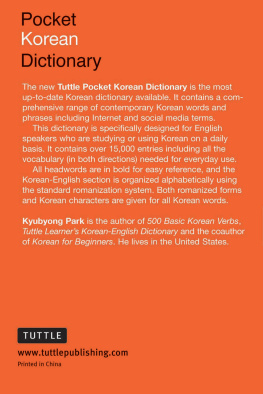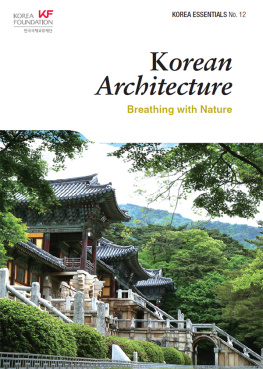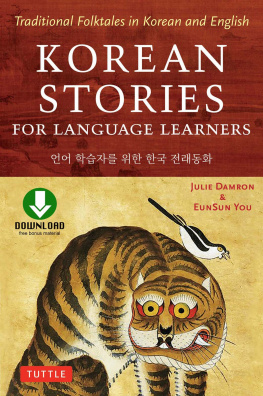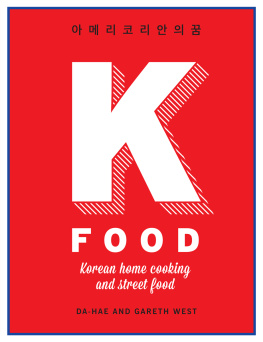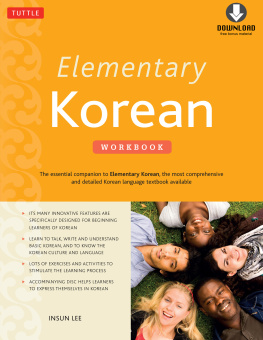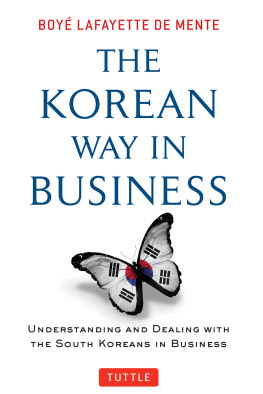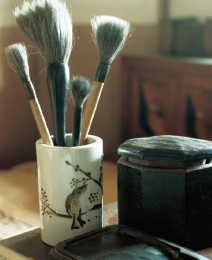Handmade paper, writing brushes, inksticks, and inkstones have long been the tools of the Korean painter and calligrapher. Not only are these tools essential to traditional painting and calligraphy, but through their long history they have also come to possess special meaning for the Korean people.
In traditional society, these four tools were called the scholars four friends or the scholars four treasures, a sign of the respect accorded them as the essential companions of the literati class. In the context of the Confucian value system upon which the Joseon Dynasty (1392-1910) was based, the social status of the literati was second only to that of the monarch. It was the literatis refinement that set them apart from other classes, and the scholars four friends were the symbols of this scholarly cultivation. Paper, brushes, ink, and inkstones were more than tools for artistic expression; they were symbols of lofty scholarly ethics, necessities for any Korean intellectual, and, in many cases, ostentatious status symbols.
The Korean use and basic conception of the brush are different from those of Western culture. For example, a wide variety of brushes, ranging in size, shape and texture, are used in Western oil painting, each expressing a distinct feeling. An Oriental brush, however, can express a broad range of emotions depending on the way it is used. An oil paint brush cannot imitate the way a single touch of an Oriental brush changes shading or color. The artist grips the top of the brush, and only the very tip of the brush touches the surface of the paper. The rest of the brush serves to transmit the artists energy to the paper.
Koreans often say ink should be as clear and pure as a childs eyes. The best ink is made by placing a small amount of water in the inkstone well and rubbing the inkstick slowly back and forth for a long time. One should only make as much ink as one will use in one sitting. Of course, the amount of water added depends on how the ink is to be used. More water is needed for ink used in shading.
The role of the inkstone is very much like that of the ink. In fact, the inkstone was and still is the subject of much discussion among painters and calligraphers, who view it as an important tool and symbol of their work. A fine inkstone reflects the character of its owner.
INFORMATION ON TRADITIONAL PAINTINGS
MUSEUMS IN KOREA
Korea has a bewildering variety of art museums large and small, public and private. They range from the mammoth National Museum of Korea, probably the largest museum in Asia, to smaller private galleries in unexpected places. Here are some of Koreas art museums and galleries where you can enjoy traditional paintings.
DONGGUK UNIVERSITY MUSEUM
This museum was founded to exhibit, uncover, research and promote Buddhist artifacts and art. It has Buddhist sculptures, paintings and crafts, with major pieces in each genre represented.
Hours 10:00 to 16:00, MonFri (closed weekends, public holidays)
Admission Free
More Info T. (02) 2260-3722, www.dgumuseum.dongguk.ac.kr
Getting There Exit 1, Dongdae Ipgu Station, Line 3.
GAHOE MUSEUM
Hidden in the winding alleyways of the quaintly traditional Bukchon neighborhood, the Gahoe Museumitself a Korean traditional homespecializes in folk art and has a collection of 250 folk paintings. The museum also conducts hands-on programs.
Hours 10:00 to 18:00, closed Mondays
Admission 3,000 won
More Info (02) 741-0466, www.gahoemuseum.org
Getting There Exit 2, Anguk Station, Line 3. Take local bus #2 and get off at Jeontong Byeonggwa Gyoyugwon.
GANSONG ART MUSEUM
Housing the private collection of renowned art collector Jeon Hyeong-pil, Gansong Art Museum was founded in 1938, making it the oldest private museum in Korea. It is also home to one of Koreas finest collections of Korean traditional paintings, including many by famed 18th century genre artist Hyewon Sin Yun-bok and several by landscape artist Jeong Seon. Its open only twice a yeartwo weeks in May and two weeks in Octoberbut when it does open its doors, its a must-visit for any Korean art fan.
Hours Open for two weeks in May and October
Admission Free
More Info T. (02) 762-0442, www.kansong.org
Getting There 10 minute walk from Exit 6, Hansung University Station, Line 4
GYEONGGI PROVINCIAL MUSEUM
This museum has a diverse collection of Korean paintings, pottery, old documents and folk crafts. Joseon paintings make up the bulk of the painting collection, which boasts an especially nice gathering of portraits of Joseon-era notables, landscapes and calligraphy.
Hours 10:00 to 18:00
Admission 4,000 won
More Info T. (031) 288-5400, http://musenet.ggcf.kr
Getting There Take Bus 1560 or 5001-1 (Exit 3, Gangnam Station), 5500-1 (Gwanghwamun) or 9404 (Nonhyeon Station) and get off in front of the museum.
LEEUM, SAMSUNG MUSEUM OF ART
This beautiful art space, located on the southern slopes of Mt. Namsan in the multicultural Itaewon neighborhood, was designed by three of the worlds top architects. It is also home to one of Koreas best collections of traditional and modern art, including some beautiful examples of Joseon-era genre and landscape paintings.
Hours 10:30 to 18:00, closed Mondays
Admission Adult 10,000 won, Students with valid ID (18 and under) 6,000 won
More Info T. (02) 2014-6901, www.leeum.org
Getting There Exit 1, Hangangjin Station, Line 6. Walk 100m and head right
NATIONAL MUSEUM OF KOREA
The National Museum of Korea is one of the worlds largest museums. The National Museums collection includes a large gatheringabout 800 piecesof Korean traditional paintings and calligraphy, particularly from the Joseon era. The highlight of the collection is an album of 25 genre paintings by Danwon Kim Hong-do. The museums collection also includes a substantial collection of Buddhist paintings, some from the Goryeo era.
Hours 9:00 to 18:00 (Tue, Thur, and Fri), 9:00 to 21:00 (Wed and Sat), 9:00 to 19:00 (Sundays and public holidays); closed Mondays.
Admission Regular exhibits are free, but special exhibits charge for admission.
More Info T. (02) 2077-9000, www.museum.go.kr
Getting There Exit 2, Ichon Station, Line 4 and Jungang Line
NATIONAL PALACE MUSEUM OF KOREA
Occupying the buildings on the grounds of Gyeongbokgung Palace that formerly held the National Museum of Korea, this museums large collection of royal artifacts from the Joseon-era offers a fascinating glimpse into the lives of Koreas monarchs and their courts.
Hours 9:00 to 18:00 (weekdays), 9:00 to 19:00 (weekends and public holidays); closed Mondays

